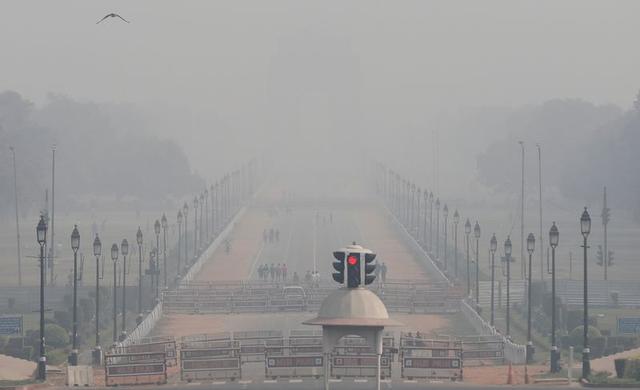LAUNCESTON, Australia- India may be the last major climate change domino to fall into place as the government considers setting a target to reach net zero carbon emissions, in line with similar moves by other major polluters.

India is examining setting a target of net zero emissions by 2050, according to media reports, with Bloomberg also reporting that an earlier ambition of 2047, to coincide with 100 years of independence, is being discussed among senior officials in Prime Minister Narendra Modi’s office.
If India does end up setting a target of no later than 2050, it will trump China’s promise of 2060 and match the ambition set out by new U.S. President Joe Biden.
China, the United States and India are the world’s three largest carbon emitters respectively, and any hopes of meeting global emissions reductions targets to mitigate climate change are largely dependent on the actions of these three nations.
If the United States and India do set formal targets of net zero emissions by 2050, it would mean that more than two-thirds of global carbon emissions and three-quarters of world gross domestic product would be bound to net-zero goals, according to Simon Evans, policy editor of climate website Carbon Brief.
However, as with China, the devil is going to be in the detail when it comes to India and any net zero target.
China and India both face seemingly contradictory goals, namely continuing their rapid economic growth while reducing emissions simultaneously.
Climate analysts will point to research showing it can be done, but the cost of switching to renewable and clean energy sources will be tremendous for both nations, even assuming their political leaders are determined to succeed.
One thing is clear about net zero targets, namely that new coal-fired power generation has be to effectively stopped, and existing generation phased out and replaced by renewables.
In this regard India has quite ambitious targets already, with the South Asian nation aiming for 450 gigawatts (GW) of renewable energy generation capacity by 2030.
This would be about five times the existing 90 GW of renewable energy already installed, and meeting the target would require installations of at least 35 GW per year from now until 2030.
The physical building of the wind and solar plants is probably the easiest part of India’s target, with integrating the electricity generated into the grid and dealing with the variability of output far greater challenges.
India will also have to halt its pipeline of new coal-fired plants and work to close older units.
India still has about 36.6 GW of coal generation under construction and 29.3 GW of plants that have either been announced or are seeking permits to build, according to data on the website of the Global Energy Monitor, an environmental group that tracks coal-fired power plants worldwide.
CHINA AMBITIONS
If India has challenges to meet a 2050 target, so does China in reaching its 2060 goal.
Similar to India, China has made rapid progress in boosting the use of renewables, but it remains heavily reliant on coal for electricity and the latest five-year plan, released earlier this month, did little to persuade that Beijing is going to rapidly move away from coal.
The five-year plan didn’t ban new coal-fired plant construction, rather it committed to cutting the economy’s carbon intensity by 18% and having non-fossil fuels meet 20% of total energy consumption by 2025.
China currently has 88.1 GW of coal-fired capacity under construction and a further 158 GW announced or in the process of permitting, in both cases about 49% of the global total.
Even allowing for accelerated retirements of older plants, it would appear that China will continue to increase its coal-fired generation, even if coal’s overall share of total generation falls in percentage terms.
It’s also worth noting that both India and China are well behind many Western nations when it comes to carbon emissions per capita, a possible signal that it will be challenging for them to lift hundreds of millions of people into more middle-class lifestyles while meeting climate goals.
The United States, Australia and Canada have emissions per capita more than double that of China and some nine times more than India.
The main problem with setting long-term climate goals is that the actions needed to meet them need to start now, and while India and China have definitely started down the path, it could be argued that they are still walking when they need to run.
The opinions expressed here are those of the author, a columnist for Reuters.






